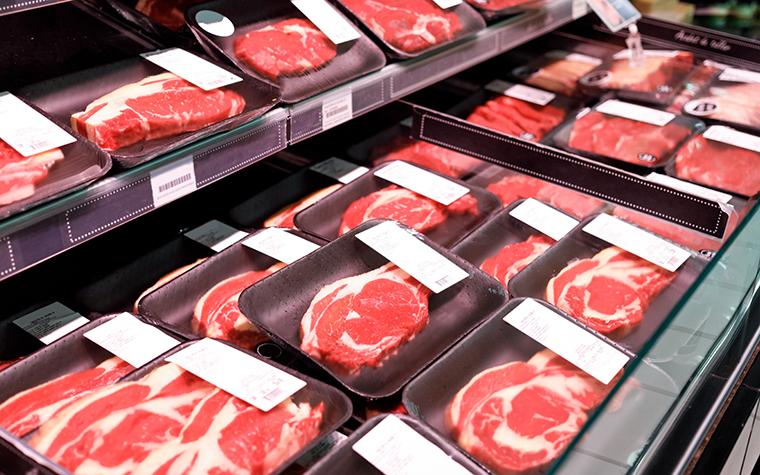Reduced supply amid strong demand means consumers pay more at the meat case.
BOLIVAR, Mo. – Recent data from the U.S. Bureau of Labor Statistics shows the average retail price of ground beef rose to a record $6.12 per pound in June 2025.
This is up from $5.98 in May and $5.47 a year earlier in June 2024. Prices for certain beef cuts might ease with the end of peak grilling season, but ground beef prices remain historically high.
“Tight cattle supplies and continued strong demand are keeping beef prices high,” said Danyelle Chinn, research analyst at the University of Missouri Rural and Farm Finance Policy Analysis Center (RaFF). “It’s a positive signal for Missouri’s cattle producers, but it also means consumers are feeling the impact at the store.”
How we got here: Drought and high input prices
“Multiple years of drought and low profitability forced beef producers to shrink their herds in recent years,” said Wesley Tucker, MU Extension agricultural business policy specialist.
Cows need forage to graze in the summer and hay to eat in the winter. Several years of drought forced producers to make tough decisions. With limited forage options, producers had to sell chunks of their herd and were not able to retain heifers to replace them.
“A large section of the production factory – the cow herd – has been lost,” Tucker said.
High input prices also drove up the cost of production. Limited profitability gave producers little incentive to expand.
“Current beef cow numbers are the lowest they have been since 1961,” Tucker said.
Mexico and tariffs
New World screwworms have slowly migrated north from southern Mexico, forcing the USDA to close the border to cattle imports to protect U.S. cow herds from this parasite.
“Feedlots in southern parts of the country rely on Mexican cattle to keep feedlots full, so this further shortens the beef supply,” Tucker said. With the shrinking domestic beef herd, imports have become an important component to keeping grocery store shelves full.
As trade policy continually develops, the threat of tariffs could further affect available supplies.
Steady demand
Even as prices have risen, consumers continue to buy beef rather than switch to alternative proteins like pork or chicken. With summer well underway and grilling season at its height, demand is gobbling up limited supplies.
The extremely strong beef demand index is supported by consumer weight loss programs that emphasize a high-protein diet, Tucker said.
“Markets are the result of supply and demand,” he said. “The current situation is the perfect storm of limited supply and strong demand colliding to produce record prices.”
When could we see a reduction in beef prices?
“Greater supply or lower demand could produce cheaper prices,” Tucker said.
For supply to increase, beef producers must rebuild the herd. But means producing less in the short run: If more heifers are retained for breeding purposes, feedlot inventories fall, reducing the number of animals available for slaughter. It takes multiple years from the time a heifer is retained and bred until her calf enters the food chain and increases production.
“In the short run, consumers could face even higher prices as the herd is being rebuilt,” Tucker said.
If the economy were to stumble and disposable income were to falter, consumers might switch to cheaper proteins and avoid higher priced cuts of meat, he said. Any change in the economy or global markets affecting beef exports can affect the price of beef.
“But for now, consumers are forced to stretch their pocketbook at the meat case,” Tucker said.
Writer: Julie Harker
